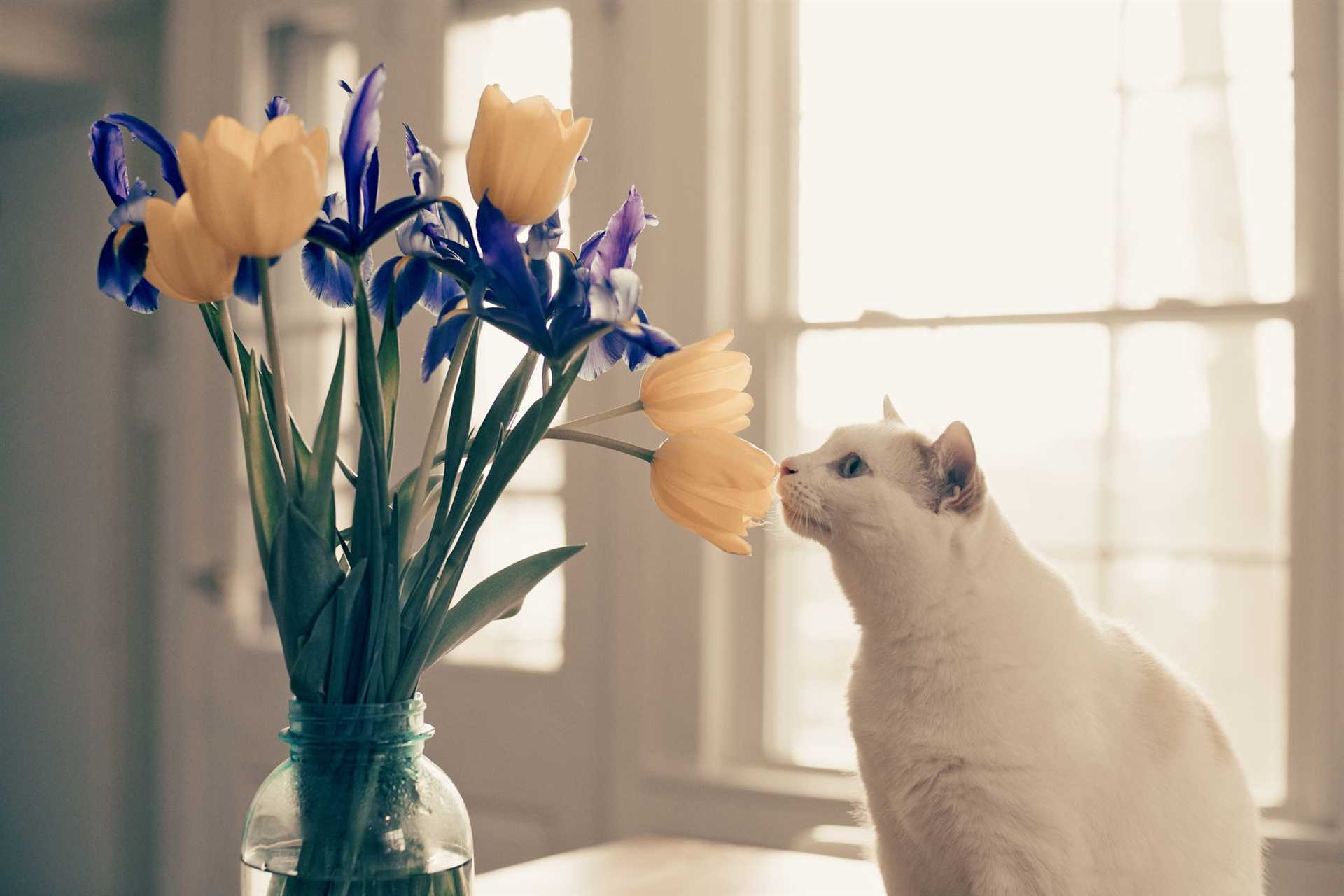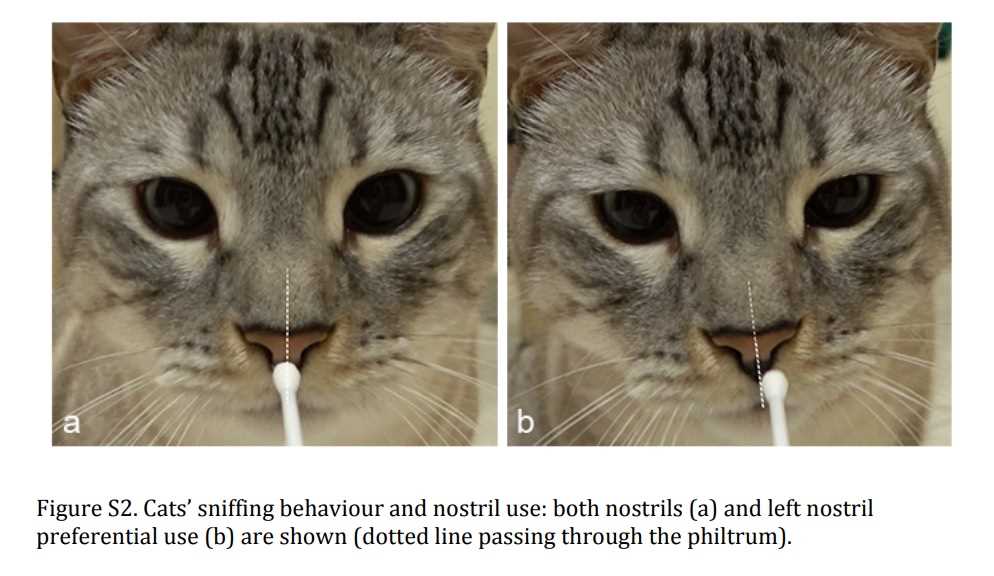



Did you know I can detect scents up to 14 times better than humans? My olfactory receptors are specially designed for this purpose, with around 50 to 80 million of them compared to just 5 million in you guys. This remarkable ability lets me pick up on a variety of smells, from the faintest whiff of catnip to the subtle scent of my human’s favorite treats.
My keen perception of odors plays a significant role in my daily life. For instance, I can identify my territory by the scents left by other animals. This helps me feel secure and aware of my surroundings. It’s not just about food; I can also sense emotions through smell. When my human is happy or stressed, I can pick up on those pheromones and adjust my behavior accordingly.
To maximize my sniffing potential, I recommend giving me opportunities to explore different environments. Fresh air and new scents can be incredibly stimulating. Additionally, incorporating scent-based games, like hiding treats around the house, will engage my natural instincts and keep me mentally sharp. So, if you want to bond with me, let’s play with scents!
Understanding My Olfactory Abilities
My ability to perceive scents is far more advanced than that of humans. With around 50 to 80 million olfactory receptors, I can detect a range of odors that you might not even notice. This incredible skill allows me to explore my surroundings in a way that’s truly unique.
One fascinating aspect is the vomeronasal organ, or Jacobson’s organ, which helps me sense pheromones. This means I can pick up on social cues and emotional states from fellow felines and even from humans. It’s like having a sixth sense for understanding what’s happening in my environment!
When it comes to food, I can smell treats from a considerable distance. My nose is finely tuned to detect even the slightest hint of fish or poultry. This ability is not just for finding meals; it plays a significant role in my hunting instincts, even if I’m just chasing a toy mouse around the house.
For those considering which breeds might exhibit these remarkable traits, check out the best cats for into the future. Breeds with a strong olfactory sense can enhance your home life significantly!
Understanding the Anatomy of a Cat’s Nose

The structure of my nose plays a crucial role in my ability to detect various scents. The external part, known as the rhinarium, is the moist surface that enhances olfactory capabilities. This area is rich in receptors, allowing me to sense even the faintest odors.
Nasal Cavity and Olfactory Receptors
Inside my nose, the nasal cavity contains specialized olfactory epithelium. This tissue houses millions of olfactory receptors, which are responsible for interpreting different smells. In comparison to humans, I have about 50 to 80 million of these receptors, while they have a mere 5 million. This anatomical difference is one reason why I can identify scents so much better.
Jacobsen’s Organ

Another fascinating feature is Jacobsen’s organ, or the vomeronasal organ, located at the base of my nasal cavity. This structure allows me to detect pheromones, which are chemical signals that communicate information about my environment and other animals. This is especially important for social interactions and territory marking.
| Feature | Function |
|---|---|
| Rhinarium | Moist surface enhancing scent detection |
| Nasal Cavity | Houses olfactory epithelium and receptors |
| Olfactory Receptors | Detect various odors |
| Jacobsen’s Organ | Detect pheromones for communication |
This unique anatomy is what allows me to experience the world through scent in ways that humans can hardly imagine. Each whiff tells a story, revealing information about my surroundings, potential food sources, and even other animals. That’s why my nose is one of my most valuable tools for exploring life!
Comparing Feline and Human Olfactory Abilities
My sense of smell far surpasses that of humans. While you humans have about 5 million olfactory receptors, I boast around 200 million. This difference allows me to detect scents at incredibly low concentrations, making my nose a powerful tool for exploring the world.
Humans primarily rely on their vision and limited olfactory capabilities. In contrast, my keen ability allows me to identify various pheromones, which are crucial for communication and social interactions among my feline friends. This heightened perception helps me track prey and recognize familiar scents in my territory.
Specific Examples of Sensory Differences
For instance, while you might notice a hint of your favorite food from a few feet away, I can catch that delightful aroma from several blocks. Additionally, my ability to differentiate between various smells enables me to detect changes in my environment, such as the presence of other animals or potential threats.
Implications for Behavior
This extraordinary capacity influences my behavior significantly. I can assess my surroundings and make decisions based on scent cues alone. This instinctual skill is vital for hunting, socializing, and ensuring my safety. Understanding this unique aspect of my biology helps humans appreciate the world from my perspective.
How Felines Use Odors for Communication
Direct interaction through scents is a primary way I, as an 8-year-old Scottish Fold, convey messages to my fellow felines. Each time I leave my unique olfactory mark, I share insights about my health, mood, and territory.
Marking Territory
In my domain, I utilize scent to establish boundaries. I do this by:
- Rubbing my face against objects, releasing pheromones from scent glands located around my cheeks and forehead.
- Scratching surfaces, which not only sharpens my claws but also deposits scent from my paws.
- Urine marking to signal dominance or availability to potential mates.
Social Interactions
In social settings, I communicate emotions and intentions through various scents. Here’s how:
- Friendly encounters are often accompanied by pheromones that indicate a desire to bond.
- During play, I may emit specific scents that signal excitement or readiness to engage.
- If I feel threatened, my body may produce different odors that warn others to keep their distance.
Understanding these signals enhances the interaction between me and my fellow critters. By paying attention to these aromatic cues, I can navigate my relationships and environment more effectively.
The Role of Smell in a Cat’s Hunting Strategy
In the wild, my fellow felines and I rely heavily on our incredible olfactory capabilities to track down prey. This ability allows us to detect scents from great distances, helping us locate hidden animals or even discern the presence of potential threats. Our noses can identify specific pheromones released by other creatures, which can indicate their location, reproductive status, or even the presence of rival hunters.
During a hunt, I often use scent trails to guide my movements. When I catch a whiff of a mouse or a bird, I follow the trail, determining their direction and distance. The unique scents left behind by these animals provide crucial information about their habits and behaviors, allowing for a strategic approach to stalking them.
Tracking Prey

A feline’s keen sense of smell is not just about detecting food; it involves understanding the environment. For instance, I can differentiate between scents on the ground to identify if an animal has passed by recently. This tracking ability ensures that I can plan my ambush effectively, increasing my chances of a successful catch.
Marking Territory
Another aspect of my hunting strategy involves pheromones. By marking my territory with specific scents, I communicate to other animals that this area is claimed, reducing competition. This territorial marking gives me the advantage of having a secure hunting ground while also warning others to stay away.
My remarkable olfactory prowess is a significant aspect of my survival tactics. With the ability to pick up on various scents, I can navigate my surroundings, hunt efficiently, and maintain my territory. For those interested in capturing my adventures, check out the best camera under 25000 digit for some amazing shots of my hunting escapades!
Environmental Influences on My Olfactory Perception
Temperature plays a significant role in how I perceive aromas. Warmer conditions enhance the volatility of scent molecules, allowing me to detect them more easily. Conversely, cold weather can dull my ability to pick up on certain odors. Keeping my environment at a comfortable temperature can improve my sniffing experience.
Humidity is another important factor. High moisture levels in the air can amplify scents, making it easier for me to identify food or potential mates. Dry environments, however, can hinder my perception, as fewer particles are available for detection. A balanced humidity level helps me stay sharp and aware of my surroundings.
Impact of Air Quality

Pollution and strong chemical odors can interfere with my ability to detect subtle scents. Clean air allows me to navigate effectively and recognize familiar smells. If the environment is filled with overwhelming fragrances or toxins, it can mask the scents I rely on for safety and communication.
Influence of Surroundings
The presence of other animals can create a complex olfactory landscape. The scents left behind by fellow felines or even other species can be distracting or informative, depending on the situation. Familiar territories often have a blend of scents that I can interpret to understand my environment better.
In summary, factors like temperature, humidity, air quality, and the presence of other creatures significantly influence my smell perception. A well-maintained environment enhances my experiences and interactions in the world around me.
Practical Tips for Enhancing Your Feline’s Olfactory Experiences
Introduce a variety of scents into your environment. Use herbs like catnip, valerian root, or even fresh basil. Rotate these items to keep things exciting and engaging.
Interactive Activities
- Set up a scent trail using treats or your favorite snacks. Hide them around the house to encourage exploration.
- Create a scent box filled with different materials like fabric, grass, or soil. Let me explore and discover various aromas.
- Use essential oil diffusers, ensuring they are safe for pets. Lavender and chamomile can be calming and pleasant.
Enriched Environment
- Incorporate scratching posts and climbing structures near windows. Fresh outdoor scents can stimulate curiosity and enjoyment.
- Change bedding or blankets regularly to introduce new smells. This can provide a comforting environment that feels fresh.
- Engage with toys that have unique scents, like those filled with catnip or infused with natural aromas.
Monitoring reactions to different scents is key. Pay attention to my behavior; I’ll let you know what I enjoy most. Creating an aromatic haven will keep me stimulated and happy.










